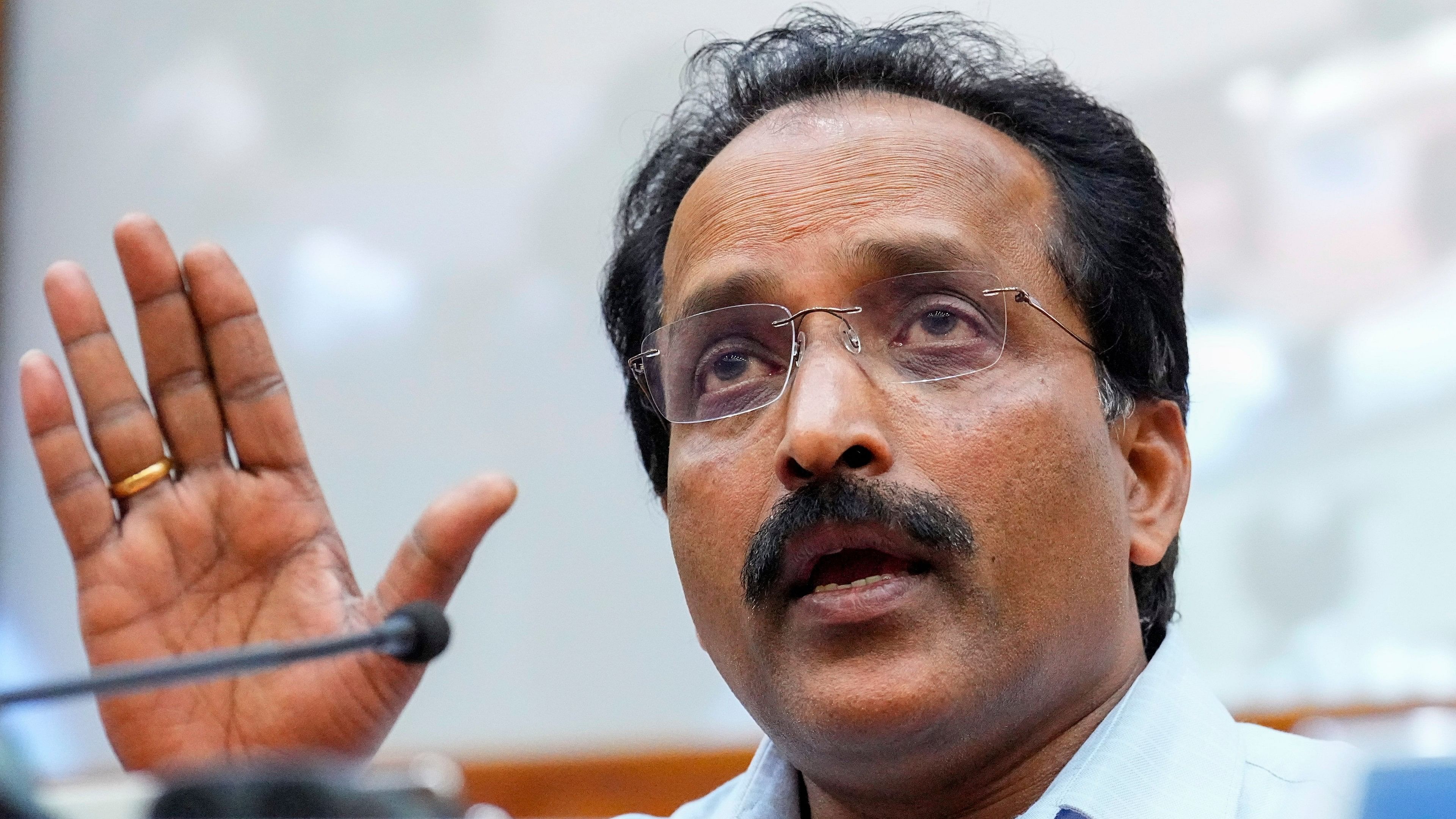
ISRO Chairman S Somanath
Credit: PTI File Photo
New Delhi: India is set to take its first step towards a sample-return mission from the moon by end 2024 when Indian Space Research Organisation will carry out its maiden space docking experiment to demonstrate its ability to conduct such a complex space voyage, ISRO chairman S Somanath said here on Wednesday.
The ISRO plans to execute the SPADEX (space docking experiment) mission by November-December this year with an eye to launch the Chandrayaan-4 by 2027, but deep-space probes to Venus and Mars are not a priority for the agency at the moment.
“The space vision 2047 indicates our priorities. We are giving thrust to build our own space station and to have more access to the moon. The mission to Venus and a second mission to Mars have not been fast-tracked,” Somanth said here at the Indian Space Congress.
The configuration of Chandrayaan-4 that will require multiple lunches has been worked out and docking capabilities at the “earth-space” and “moon-space” have been developed.
The plan is to engage five modules for re-entry, transfer, ascend, descend and propulsion. In other words, there will be separate probes to soft-land on the lunar surface, pick up samples, take it to the lunar orbit, making the journey back to the earth and a safe landing.
The mission requires a rendezvous in space that will be perfected in the Rs 124 crore space docking experiment. The experience will come handy in building the Bharatiya Antariksha Station that will eventually comprise five modules including facilities to accommodate human crew in future.
The first module for the Indian space station is slated for launch by 2028 using the LVM3 rocket. Other four modules are to be uplifted later using either the LVM3 or the next generation launch vehicle (NGLV), which is currently under development. The entire station will be in place by 2035.
Asked about the human space flight (Gaganyaan) programme, Somnath said three crucial tests including the first unmanned mission would be completed by December. Other two are a demonstration test of the vehicle and a pad abort mission.
On ISRO’s small satellite launch vehicle programme, Pawan Goenka, chairman of Indian National Space Promotion and Authorisation Centre (IN-SPACe) said six companies had evinced interest in making these rockets, which will open up the doors for commercially lucrative launch-on-demand activities in India.
Somanath said ISRO was eyeing 20-30 SSLV launches in India while making it clear that the rockets would be produced in the private sector.
